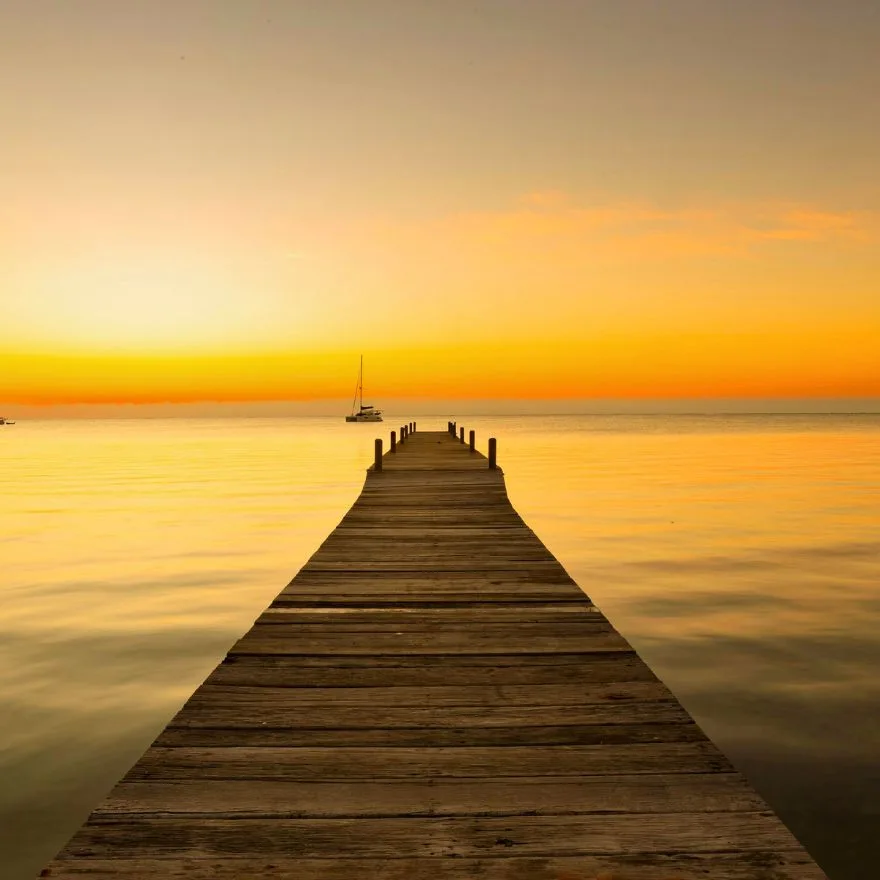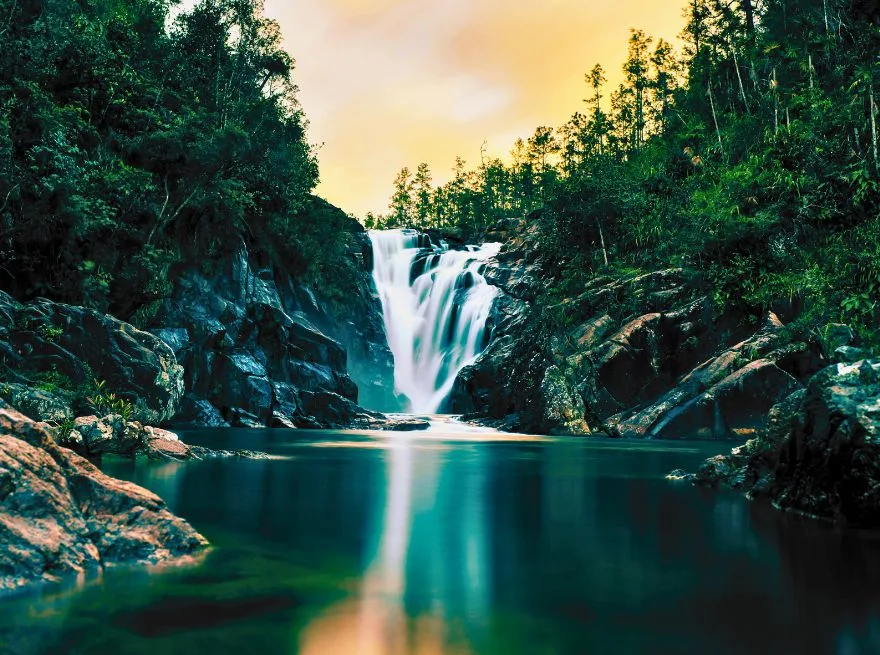There are cities you visit, and cities you enter like a tide—quietly, then all at once, until your heartbeat learns a new rhythm. Belize City was that kind of tide for me. A place where the sea glimmers like scattered jade, where wooden houses lean gently toward the horizon, and where life moves with a softness that feels like an invitation.
Here, on the eastern edge of Central America, the Caribbean whispers of old stories, the streets hum with warm laughter, and every corner seems to carry a shimmer of sun-worn magic. Belize City is not just a point on a map; it is a threshold—where cultures weave together, where history breathes beneath your feet, and where the simple act of wandering becomes an act of rediscovery.
What follows is my journey: stretched across streets and shorelines, written in the language of salt air and gentle wonder.
Below, you’ll find the ten places that shaped my days there, each one holding a fragment of what makes Belize City endlessly captivating.
1. The Swing Bridge — The Heartbeat of a City
The Swing Bridge isn’t merely a crossing—it is a pulse. Built in the 1920s and still hand-cranked open for boat traffic, it stands as one of the oldest functioning swing bridges in the world. I remember standing on it at sunrise, the air cool, the waters below swaying like a slow breath.
From here, the city feels alive in all directions: fishermen preparing for the day, fruit vendors arranging colorful pyramids of mangoes and soursop, children walking to school with that particular tropical brightness in their voices. Boats glide beneath the bridge’s steel ribs, moving toward the sea like small secrets on a journey.
The Swing Bridge teaches you something subtle—Belize City thrives in its movements, its people, its steady continuity. Watching the hand-cranking ritual is like observing time itself choosing to slow down.
2. St. John’s Cathedral — A Quiet Witness to Centuries
Constructed in the early 1800s using bricks brought from Europe as ship ballast, St. John’s Cathedral is the oldest Anglican church in Central America. Walking inside felt like entering a pocket of stillness. The wooden pews carried the gentle scent of age; sunlight floated through the stained glass in soft red and gold fragments.
But what moved me most was its endurance. This cathedral has weathered hurricanes, colonial tides, independence, and the uncountable stories of Belizean life. It stands not as a monument to grandeur but to resilience—humble, grounded, and deeply human.
Outside, the surrounding gardens rustle with sea breeze. Inside, the hush invites a moment of presence—not forced, not instructed, simply felt.
3. The Belize Museum — Where Past and Present Meet
Housed in a former colonial prison, the Belize Museum carries its history in every brick. Walking through its corridors, you can almost hear the echoes of the past—footsteps, whispered stories, the shifting weight of time. Now, those same walls are filled with exhibitions celebrating Belize’s Maya heritage, Creole traditions, Garifuna culture, and the natural wonders of the country.
The displays on Maya civilization are especially captivating: intricate jade masks, pottery carved with ancient mythology, tools shaped by centuries of skilled hands. I lingered over each object, imagining the civilizations that flourished long before borders or maps.
The museum is more than educational—it is grounding, like meeting the roots of the land beneath your feet.
4. Government House (House of Culture) — Elegance on the Waterfront
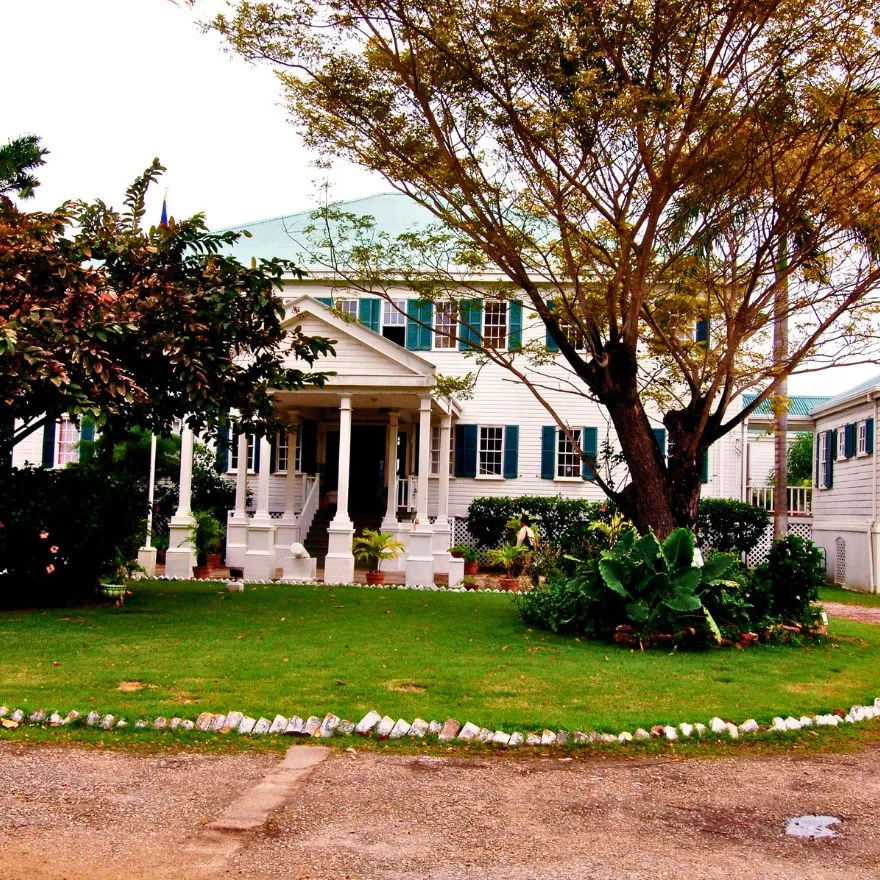
White-timbered and stately, Government House stands along the waterfront like a quiet dream from another era. Once the residence of colonial governors, today it serves as the House of Culture, a space where Belizean art, performance, and storytelling gather in celebration.
Stepping inside, I felt the soft creak of wooden floors beneath me, the kind that speak of a building that has truly lived. The verandas open toward the sea, letting the breeze weave through the rooms as though the ocean itself is a guest.
Government House holds a dignified charm—a blend of grace and everyday humanity that reflects the Belizean spirit beautifully.
5. The Baron Bliss Lighthouse — A Monument to a Mysterious Legacy
Perched along the waterfront, its white-and-red form bright against the endless blue, the Baron Bliss Lighthouse watches over Belize City with quiet loyalty. Nearby lies the tomb of Baron Henry Edward Ernest Victor Bliss—a figure cloaked in intrigue.
Though he never actually set foot on Belizean soil (he remained aboard his yacht), the Baron developed a deep affection for the place and left a significant fortune to Belize upon his death. His legacy now lives in public works, scholarships, and this luminous tribute.
The lighthouse is a lovely place to pause and feel the breeze unspool your thoughts. The sea speaks loudly here, meeting the rocks in a steady rhythm that feels almost ceremonial.
6. The Belize Sign Monument — A Canvas for Joy
In a world that often forgets to play, the Belize Sign Monument stands like a cheerful reminder—bursting in vibrant Caribbean colors along the water’s edge. Tourists climb on it, lean against it, or pose with arms outstretched. Children dart in and out of its letters. Couples capture moments that sparkle with easy warmth.
I visited near sunset, when the sky softened into sherbet orange and lavender. The sign glowed against the fading light, and the laughter around it felt like an offering to the evening. This is a place that draws out your inner brightness without asking anything in return.
7. The Bliss Center for the Performing Arts — Where Creativity Breathes
Named in honor of Baron Bliss, the Bliss Center for the Performing Arts is the cultural heartbeat of modern Belize City. Its stage hosts everything from Garifuna drumming to contemporary dance, from school performances to concerts that make the walls vibrate with joy.
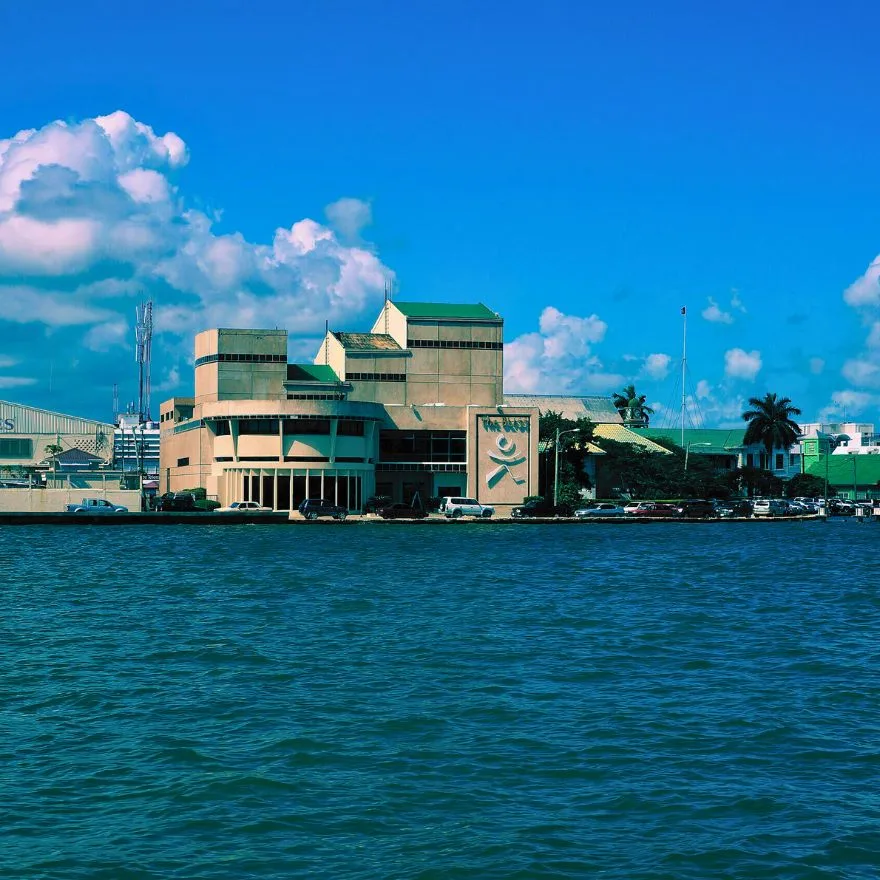
I was lucky enough to catch a rehearsal—voices rising and falling, dancers moving with a grace that felt both rooted and airborne. The center celebrates the rich creative tapestry of Belize, uplifting voices that carry the stories of the land.
It reminded me how essential art is to understanding a place—not just its beauty but its soul.
8. Old Belize & Cucumber Beach — A Step Back in Time, A Step Into Calm
Just outside the city sits Old Belize, a cultural and historical center that blends museum exhibits with the tranquility of Cucumber Beach. The museum walk takes you on a charming journey through Belize’s past: Maya temples, logging camps, colonial wooden homes, and the early Creole settlements.
But it was the beach that held me longest. The water shimmered like polished turquoise, and the rhythm of the waves felt like an invitation to simply exist. I sat with my feet in the sand, watching families play, boats drift lazily, and palm fronds trace shadows on the ground.
Old Belize offers both nostalgia and serenity—a gentle combination I didn’t know I needed.
9. The Community Baboon Sanctuary — A Wild Encounter with Nature
A short trip from Belize City brought me to the Community Baboon Sanctuary—though here, “baboon” refers to the black howler monkey, whose calls echo like thunder rolling through the forest. The sanctuary is a collection of local villages who have come together to protect this species, merging conservation with community livelihood.
Walking the lush trails, I heard them before I saw them—deep, rumbling roars that vibrated through my chest. Then, in the branches, movement: a family of howlers, watching us with curious, gentle eyes.
The sanctuary is more than wildlife; it is a testament to what can grow when people and nature share the same heartbeat.
10. Belize River Tour — A Journey Through Lush Silence
If you want to feel Belize City soften into its natural form, take a boat tour along the Belize River. The water moves like a silver ribbon between emerald walls of mangroves. Birds skim the surface, iguanas bask in the sun, and crocodiles slip beneath the water with ancient elegance.
Drifting along the river, I felt the world slow around me. The air smelled of green earth and warm sunlight. Each bend revealed a new tapestry of life—rare birds, blooming water lilies, and the quiet dance of the wind above the treetops.
This, to me, was the gentlest part of Belize: untamed yet serene, wild yet welcoming.
Local Food to Taste — Flavors That Carry the Soul of Belize
Belize City is a mosaic of flavors shaped by Creole, Garifuna, Mestizo, Maya, and Caribbean influences. You taste history and identity in every bite.
Here are some dishes that lingered in my memory:
Rice and Beans with Stewed Chicken
The unofficial national comfort dish—warm, rich, unpretentious, and deeply satisfying. The coconut rice alone is a melody.
Fry Jacks
Soft, puffy pockets of dough served with eggs, beans, or cheese. Morning becomes magic with these.
Hudut
A traditional Garifuna dish of fish cooked in coconut broth, served with mashed plantains. Warm, earthy, and soulful.
Conch Fritters
Crispy on the outside, tender within, kissed by the sea.
Johnny Cakes
Simple biscuits with layers of buttery ease—perfect with cheese or jam.
Food in Belize isn’t just nourishment; it’s a celebration of belonging.
A Little History of Belize City
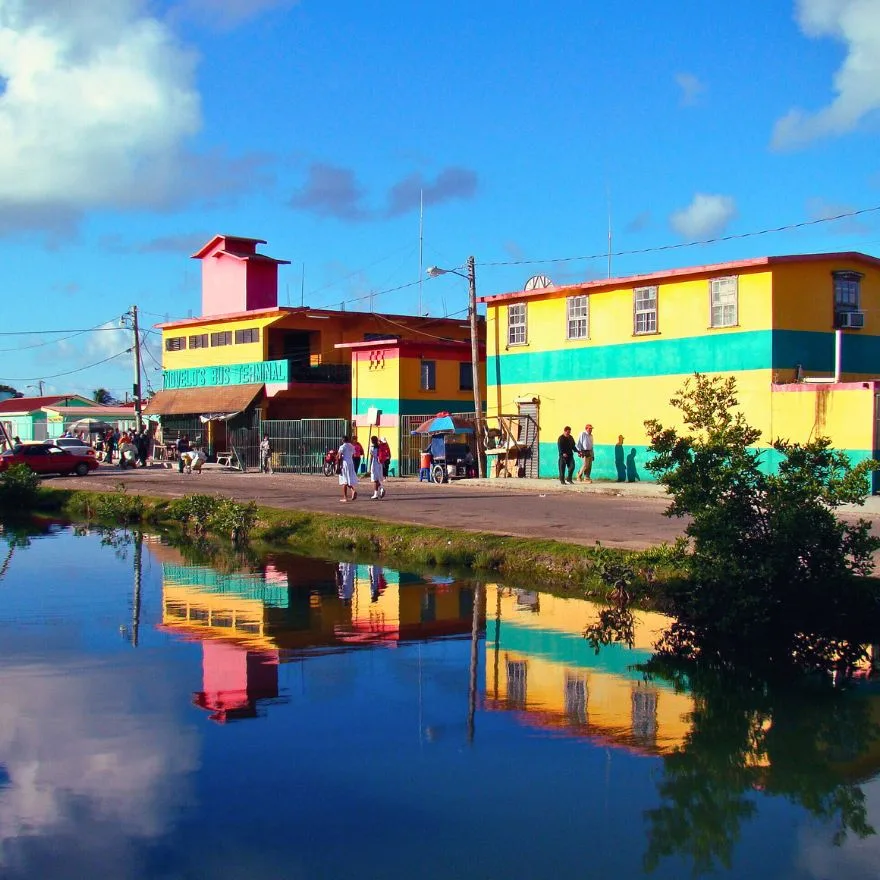
Belize City began as a 18th-century logging settlement created by the British, becoming the heart of the colony known as British Honduras. Despite hurricanes, fires, and political shifts, the city grew into a vibrant center of cultural fusion—African, Maya, Mestizo, Creole, Garifuna, and migrant communities all shaping its pulse.
It served as the capital until 1970, when Belmopan was established inland for safety reasons. But Belize City remains the country’s most populous urban center, its historic and cultural nucleus, and a place where the old and new meet like tides embracing the shoreline.
The Best Season to Visit Belize City
The most welcoming time to visit is during the dry season from late November to April.
During these months, the skies widen into clear blue expanses, the humidity eases, and the sea glitters with crisp brightness. You’ll enjoy:
- Calmer seas
- Easier wildlife spotting
- Better access to outdoor adventures
- Cooler evenings perfect for wandering
This is also the high season—vibrant, lively, and full of travelers from around the world.
If you prefer quieter days and gentle rains, May and June offer soft tropical moods with fewer crowds.
Travel Tips for a Smooth Journey
- USD is widely accepted, but it’s useful to carry some Belize dollars.
- Taxis are unmetered, so agree on the price before hopping in.
- Belizean English makes communication effortless—a gift for travelers.
- Mosquito repellent is essential, especially near rivers or after rainfall.
- Stay hydrated; the Caribbean sun is beautiful but assertive.
- Wear comfortable shoes: many attractions involve walking on wooden docks, uneven streets, or sandy paths.
- Respect local rhythms—Belize moves at its own pace, gently and honestly. Let yourself align with it.
Your Road Companion: Renting a Car with Ease
If your journey calls you beyond Belize City—toward jungle ruins, sandy keys, or hidden villages—a reliable car can feel like a loyal friend. Using DiscoverCars made renting one effortless. Their platform gathers the best local and international rental deals, lets you compare prices clearly, and provides flexible options that feel tailored to your route rather than restricting it. Whether you’re driving coastal stretches or winding roads through lush green landscapes, having your own vehicle opens the country like a story unfolding at your pace.
Q&A
Is Belize City worth visiting?
Yes. Belize City offers a unique blend of history, culture, and Caribbean charm, along with access to wildlife excursions, museums, colonial landmarks, and vibrant local food.
What are the top attractions in Belize City?
Some must-see places include the Swing Bridge, St. John’s Cathedral, Belize Museum, Government House, and the Community Baboon Sanctuary.
What is the best time to visit Belize City?
The best time is November to April, during the dry season, when weather is cooler and ideal for outdoor activities.
Is Belize City safe for tourists?
Belize City requires the same precautions as any urban destination: stay in well-frequented areas, avoid late-night wandering in unfamiliar neighborhoods, and use registered taxis.
What food is Belize famous for?
Don’t miss rice and beans with stewed chicken, fry jacks, hudut, and conch fritters—all cornerstones of Belizean culinary tradition.
Do I need a car in Belize City?
Not necessarily for the city itself, but if you want to explore the wider country, renting a car is highly convenient.
Closing Breath
Belize City is a place that doesn’t beg for your attention—it simply opens itself, and you step inside almost without noticing. Its beauty isn’t loud; it’s in the gentle sway of boats at dusk, the way the sea light touches old wooden homes, the warmth of people who speak to you as if you’ve been here before.
In its own quiet poetry, Belize City teaches you that travel isn’t always about spectacle—it is about presence, about letting places soften you in unexpected ways. And somewhere between the Swing Bridge and the Belize River, between conch fritters and sea breeze, I felt that softening unfold like a tide.
If your heart seeks a journey that is both gentle and vivid, historic and alive, humble and expansive—Belize City waits, shimmering at the edge of the Caribbean’s breath.

